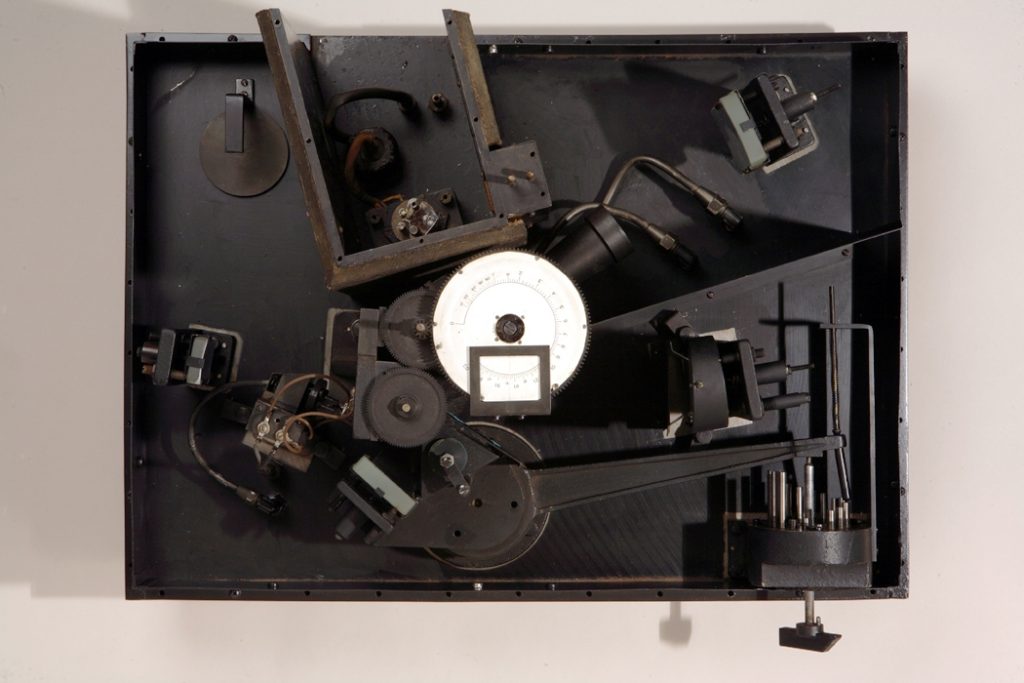Spectrophotometry and colorimetry

Spectrophotometers and Colorimeters are both used to accurately measure colour, which is important in some scientific processes and also for matching colours for commercial production of products where colour accuracy is essential. They are both complex devices that are used in many areas of chemistry – and biochemistry in particular. Both use light and a solution (liquid) to measure the absorption of light.
A Spectrophotometer (Figure 2.22) measures the reflection and intensity of light for all colours – including those colours that aren’t part of the visible spectrum. It measures the exact wavelengths of light – not just the primary colours, by passing a beam of light through a diffraction grating which splits the light into different wavelengths. A spectrophotometer is used to detect the purity of substances, to detect DNA and RNA concentrations in a sample, and lots of other biomedical analytics.
A Colorimeter (Figure 2.23) measures how much of a particular colour from the visible spectrum is in a solution by shining light through coloured filters or shining LED lights through the liquid. The device then measures how much of each colour is absorbed. It measures the three additive primaries (RGB) of coloured light. It can be used for blood analysis, detecting soil and food nutrients, chemical reaction levels, monitoring bacteria growth in biological experiments, etc.


